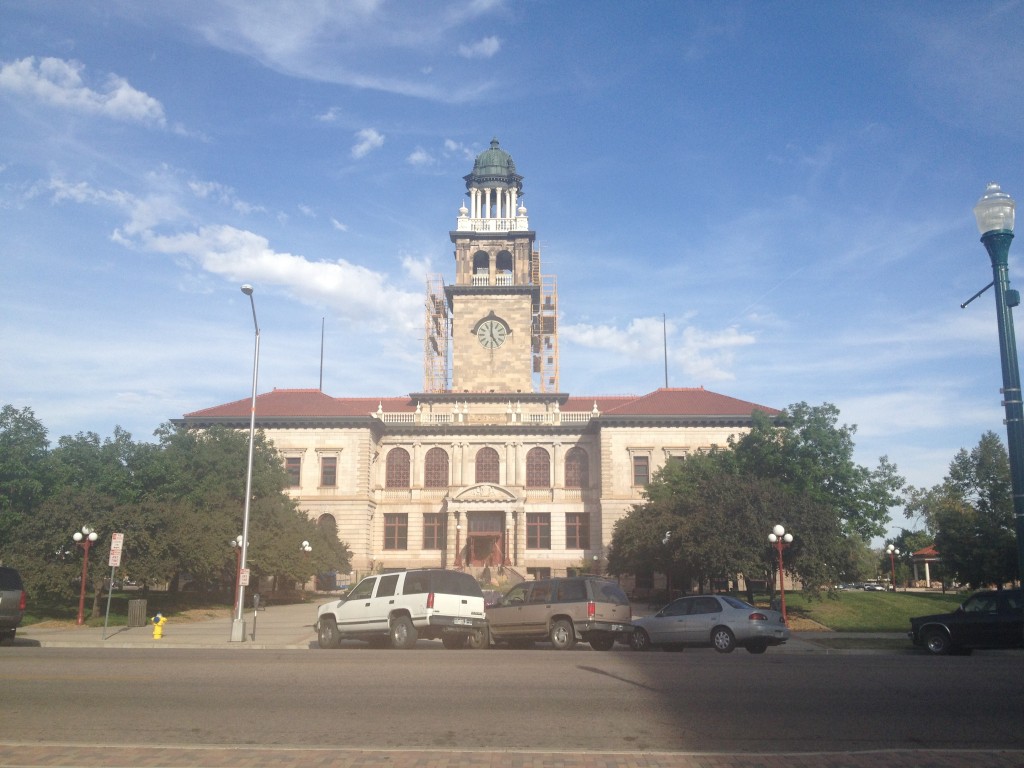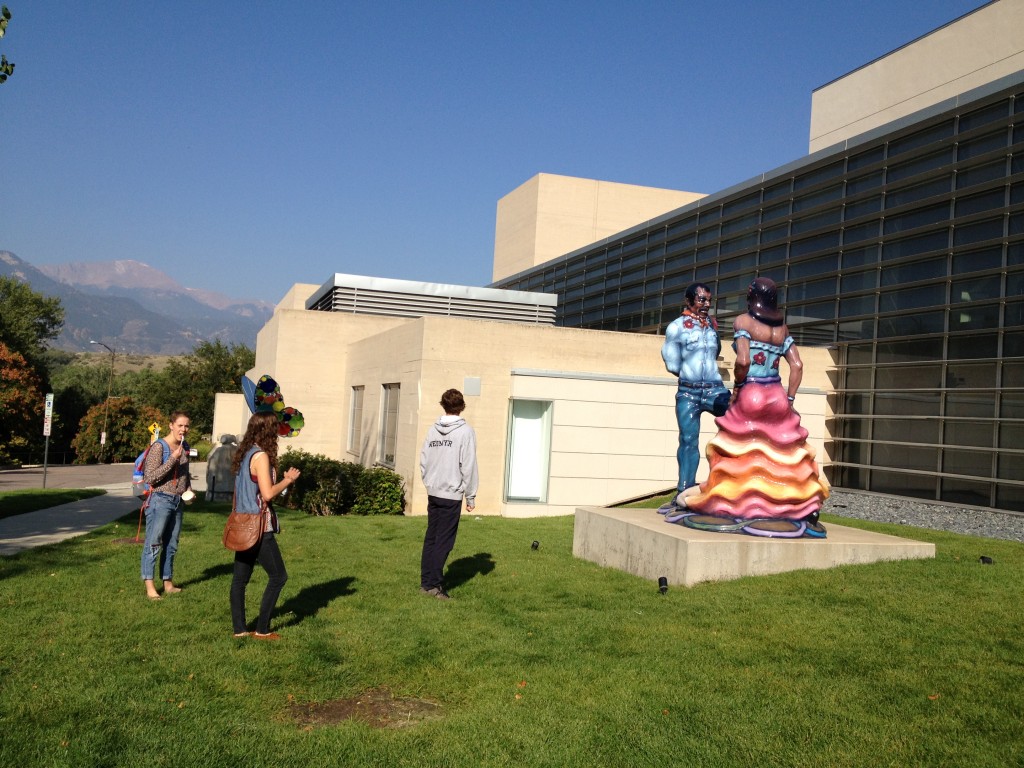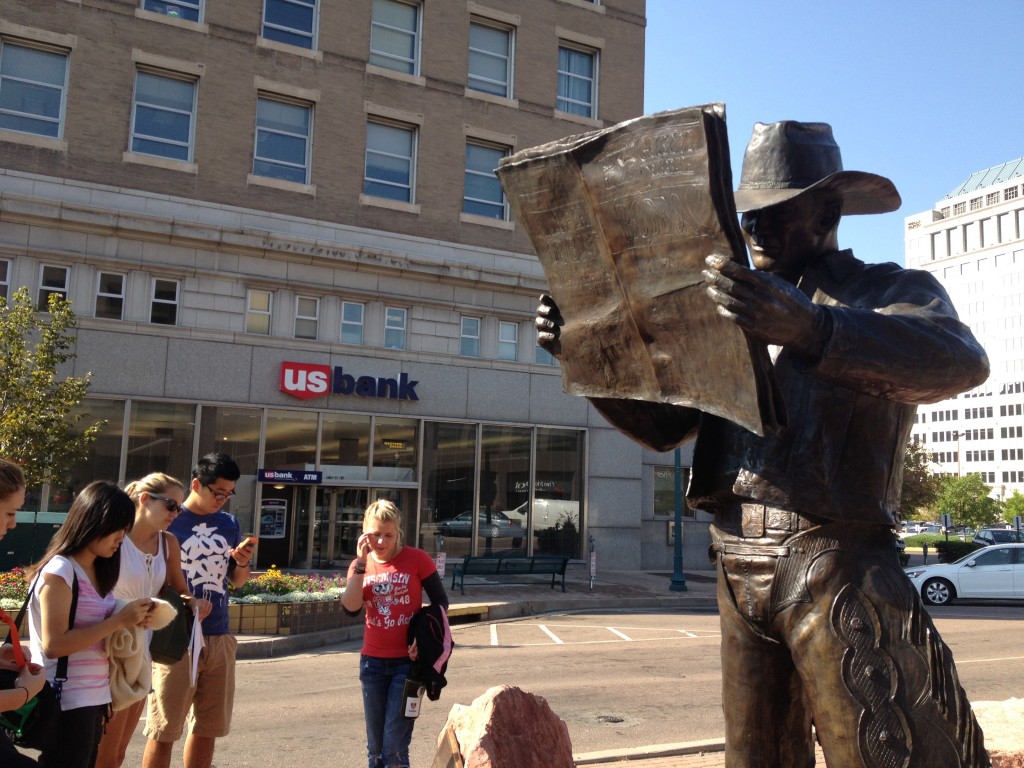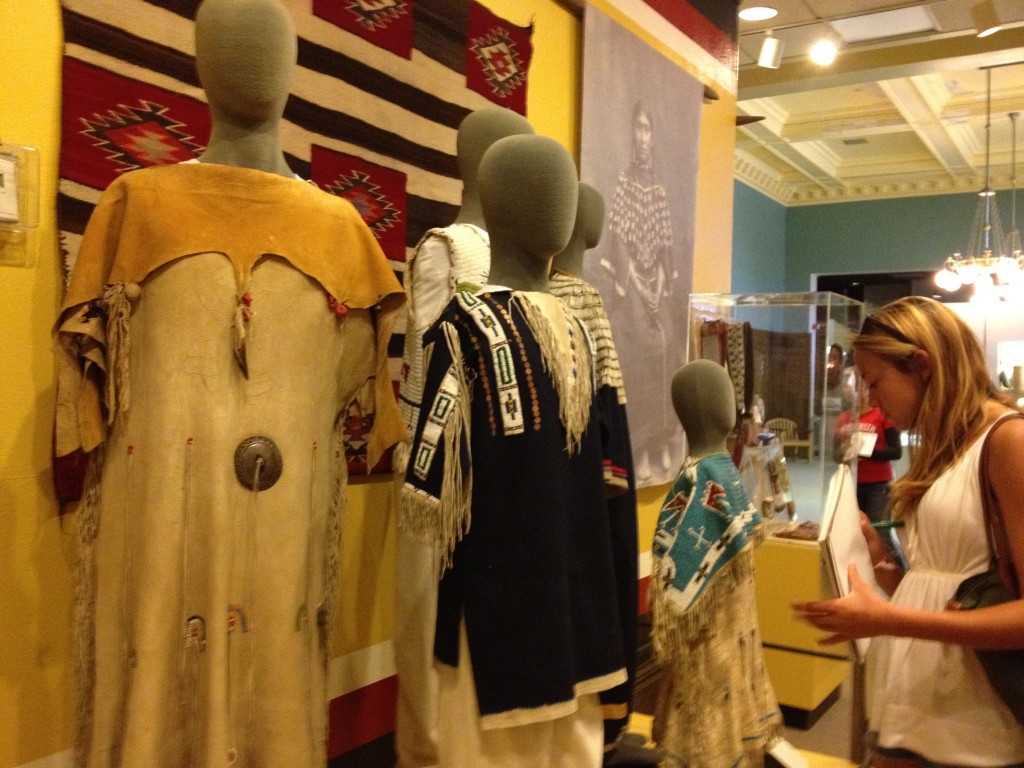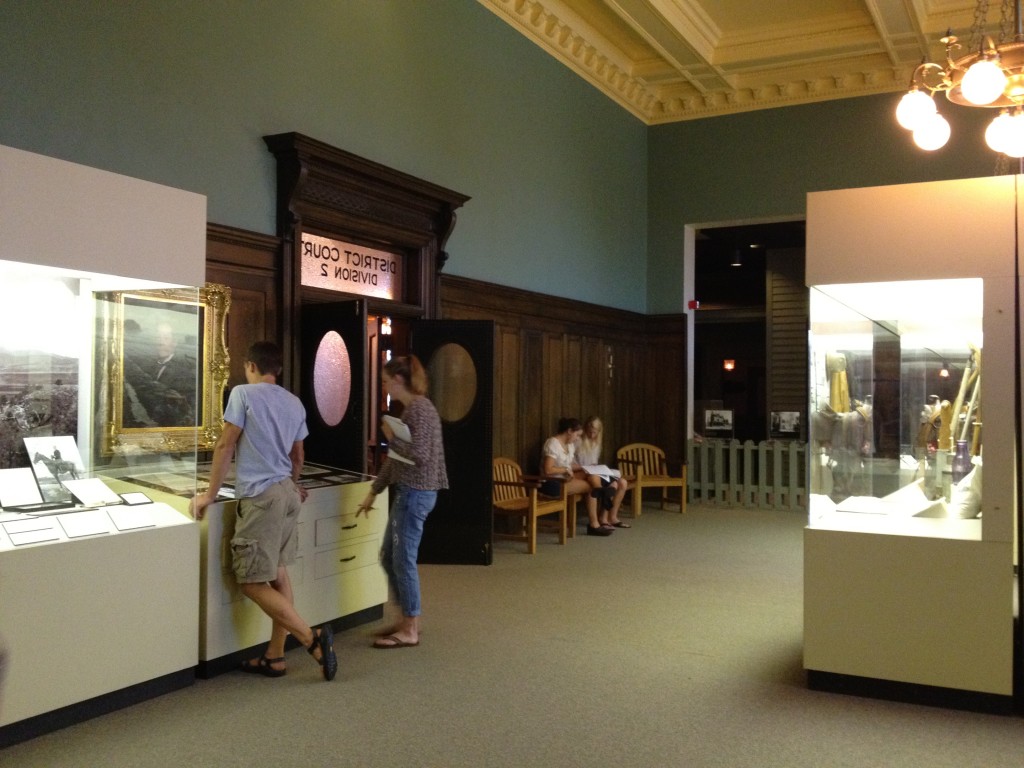The Colorado Springs Pioneer Museum
This last week and a half has been so jammed packed, I don’t even know where to begin! So like Santiago recommended we do for our papers, I will write an outline than elaborate on each event that took place.
I. Ranching in Texas:
- We read several fascinating excerpts about Vaqueros, or early Mexican/ Spanish cowboys.
- Santiago explained to us the role of the vaquero and their origins in medieval Spain. I think that many of us were surprised to realize that ranching dated much farther back than we thought.
- The vaquero migrated north, like the rest of Mexico, expanding into Texas. It was here that many of the terms, techniques and garb that we associate with more modern cowboys, were further developed and adapted for the rough Texas environment.
- Things like the “western saddle” were invented by the vaqueros, who, forced to make their own gear out of materials they had around them, blended several typed of saddles to make one that best suited their needs. They also invented now familiar things like the corral and the rodeo [although the rodeo then was more of a roundup which was conducted twice a year. The vaqueros used the rodeo as a time to display their horsemen and cattle working skills, as you can see it was clearly a precursor to the modern, American rodeo].
- Finally we watched a fascinating film about modern vaqueros, who discussed their dying livelihood. We learned that modern inventions such as the helicopter rendered their remarkable horsemanship, roping and other cattle working skills antiquated.
- When the film ended, Santiago informed us that there were actually no more vaqueros.
II. The Alamo:
- We watched the 2004 remake of “The Alamo” staring Dennis Quaid as Sam Houston, Billy Bob Thorton as Davey Crockett, Jason Patric as James Bowie and Patrick Wilson as William Travis.
- I personally enjoyed the movie thoroughly.
- This movie not only taught us about the events surrounding the Alamo and the battle itself but also better represented the complex racial and ethnic issues that surrounded the conflict [as opposed to the very Anglo-dominated John Wanye film of the same name].
- Through the Alamo we discussed memory, in personal, historical and cultural context.
- We concluded that collective/ cultural memory leads to the formation of a national identity, unifying the given peoples under a history, that may or may not be historically accurate.
- We discussed the idea of the Alamo rising to the status of a symbol – a symbol of Texan bravery and spirit. However, Santiago also addressed the issue of who this symbol left out of villainized: the Mexicans.
- What many don’t realize is that many Mexicans [and Africans, Europeans etc.] fought for in the Alamo against the Mexican Army.
- Through the Alamo’s “symbol status,” its narrative has been simplified, which has left out many key ideas, events, people etc. that may complicate this narrative and consequently Texas’ national identity.
Looking at statues outside the FAC [Fine Arts Center]
III. Our Downtown Field Trip!
- To go along with our discussions about cultural identity, memory etc., we all went on a walking tour of downtown Colorado Springs!
- Santiago took us around to some of the many statues and monuments around the city for us to think about and analyze what they say about how we view ourselves, other cultures etc…
- Although the many of the monuments were quite beautiful, the terms that did come to mind at the time when walking past frozen stone statues of “Hopi basket weavers,” or a giant steel bison, bowed low at oncoming traffic off of Pikes Peak Ave, were “symbolic” and “ritualized.” These larger than life, public images definitely displayed and reinforced our cultural stereotypes and cultural identity.
- Our final destination was the Colorado Springs “Pioneer Museum
Looking at a Memorial on Pike’s Peak Ave.
- In addition to looking at how this establishment reflected how we view ourselves as a culture, we also were supposed to compare and contrast it to the “Manitou Cliff Dwellings and Museum.” That we visited a few weeks, ago.
- I think that the general consensus was that the “Pioneer Museum” was much more informative than the “Mantiou Cliff Dwellings.” [Considering the “Cliff Dwelling Museum” was about 90% gift shops]
- However, this museum still definitely reinforced these feelings of national identity.
- Side note, a large chunk of the class enjoyed treating themselves to a Chipotle meal downtown after Santiago let us out of class early.
Looking at the Ute Indian exhibit at the Pioneer Museum
IV. Texas!
- For the next few days we talked a lot about Texas!
- We learned about the Texas Revolution, The American Annexation of Texas, The Mexican-American War and we started to read Karl Jacoby’s book “Shadows at Dawn,” which discusses the Apache-Texan conflict.
- In conjunction to learning about the events surrounding these momentous occasions in history, we also took a revisionist historian’s approach by looking at the minority voices, such as the Native Americans.
From learning about the frequently villainized Mexican and Apaches, to the lost art of the vaqueros we certainly learned a lot in the last week! I can’t wait for the last week of the block where we will studying the Ludlow Massacre and the industrialization of the Mining Industry in the West.
Reading about the Palmers of Colorado Springs at the Pioneer Museum
